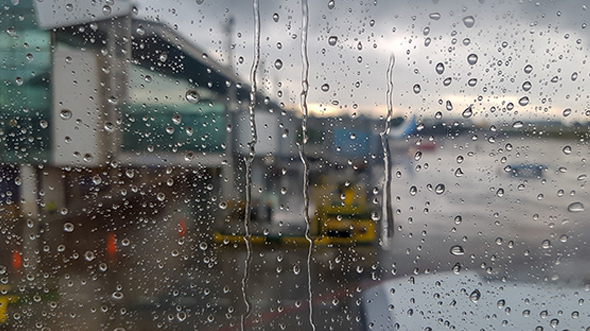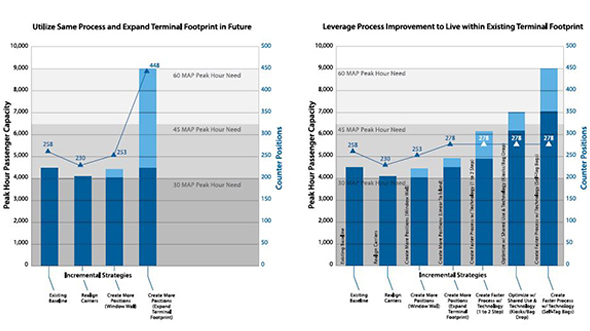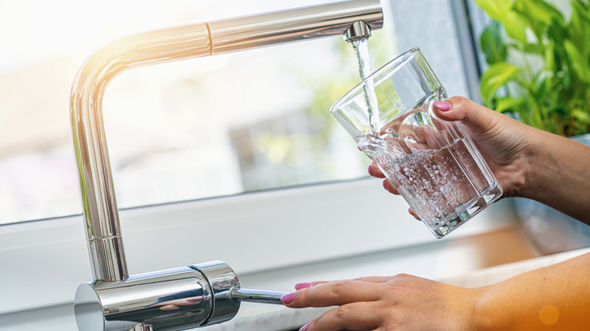
BLOG
—
COVID-19 Impact: Ensuring Water Quality at Airports Amid Slowdown
The slowdown in air traffic around the world due to COVID-19 has impacted airport operations in multiple ways. One area of concern is the potential for water quality issues due to stagnation or low usage. However, there are steps that airport facilities managers can take to ensure their water is safe now and in the future. This reduction in terminal activity also presents an opportunity for airports to assess infrastructure for planned improvement and expansion projects.
Flushing Improves Water Quality
The American Water Works Association provides a comprehensive document to help building managers address water stagnation when water service has been used sparingly or shut off for an extended period of time. The most common action item to freshen the water supply is to flush the system by opening valves and letting a new water supply flow in to replace stagnant water. The AWWA recommends flushing cold water until the quality coming from an outlet matches the supply coming into the building. For hot water, the system should be flushed until the water coming from a valve reaches a maximum steady temperature.
Ultimately, flushing is an inexpensive practice to maintain water quality and should be performed routinely. Comprehensive water management programs can inform the duration and how often the system should be flushed. For airport managers, a flushing schedule as part of a comprehensive water management program can help determine if they have the right infrastructure to accommodate peak travel periods, while not compromising safe drinking water during slowdowns.
Flushing is also a less expensive option than installing large pipes for heavy usage periods and small pipes for lower usage periods. Small pipes decrease the likelihood of having water quality issues but limit capacities to serve large crowds. Pipes need to be large enough to meet fire protection protocols and demand during peak usage. Airports need to be prepared for both busy periods, when groups of people exit airplanes and use restrooms and water stations, and during slow periods, when fewer flights are arriving and departing.
The Balancing Act
Achieving optimal water quality is a balancing act with three factors—maintaining disinfection, minimizing residuals and preventing harmful bacteria/effects. Chlorine is the most common disinfectant and it removes harmful bacteria and organisms from water supplies. As disinfectant levels decrease, bacteria increases. But as disinfection chemicals/products decompose they can leave residuals, which may also be a health hazard. Routine flushing avoids the need to continually add chlorine or other disinfectants to the water system because doing so removes disinfectant residuals and bacteria that may build up in pipes during stagnant periods. While water in some places is a scarce and finite resource, flushing is typically the most cost-effective and easily implemented practice to maintain safe water.
With less foot traffic in terminals, airport managers can readily shut down areas in a systematic approach to flush water lines. Additionally, the slowdown is an ideal time for condition assessments because there is less foot traffic to divert. Staff or contractors can more readily open ceilings for pipe inspections and shut down bathrooms or entire concourses to perform pressure or water quality testing. The pandemic has provided an opportunity to make sure these industry-standard best practices are being utilized and implemented. And since air travel was steadily increasing prior to the pandemic, the current slowdown has given leaders an opportunity to replace aging infrastructure and perform condition assessments that are prerequisites for expansion projects. Condition information gives airport managers a better picture of the cost and schedule for future capital projects.
The Need to Upgrade Systems
Infrastructure upgrades inside airports and air traffic control systems have not kept pace with advancements in aircraft technology. The aviation industry received a grade of “D” in the most recently published infrastructure report card by the American Society of Civil Engineers. And while congestion at airports was growing prior to the pandemic, airport improvements are lagging with an estimated $42 billion funding gap between 2016 and 2025, according to ASCE.
Much of the existing water infrastructure at airports and in cities has exceeded its design and functional life. Failing pipes must be replaced, but why should pipes that are in good condition be replaced? How do we know when to replace a pipe, regardless of its condition? The pipe that was installed years ago was likely designed to accommodate some additional capacity, and the reduced water consumption over decades of service means that the pipe likely has more available capacity than planners originally envisioned.
Hydraulic modeling of sanitary, storm and water systems has helped agencies and airports determine remaining infrastructure capacities. But a key component in hydraulic modeling is assessing system performance during peak periods, and that cannot be completed when there’s an overall reduction in flights. Assessing a system’s performance during the current slowdown provides insight into how well it functions during periods of lower demand for water, which is the other half of the capacity equation.
Not keeping up with capacity needs can delay critical development projects, while failures can cause service interruptions, cave-ins and sinkholes—each of which impacts airport operations. While the pandemic has had many negative impacts, one positive is that it has delayed the need for large capacity projects. Multimillion-dollar capacity improvement projects may not be needed for a bit longer, stretching the life of the existing infrastructure. The current slowdown also provides a great opportunity to conduct replacements based on our condition assessments, while minimally impacting the traveling public. So while capacity projects can be delayed, condition-related replacement or rehabilitation projects can be accelerated in schedule to prepare airports for the rebound in air travel.
COVID-19 has caused a temporary setback in air travel, but aviation traffic will rebound. Regardless of when airports return to normal operations, the water they provide needs to be safe and clean. Natural disasters and pandemics can happen at any time, so having a comprehensive water management plan in place is vital to ensure the health and safety of air travelers—regardless of demand.

David Powell
Woolpert Engineer David Powell, Ph.D., PE, helps clients find solutions for multifaceted stormwater, water and wastewater management needs. With considerable experience in hydrology and hydraulics, water quality and quantity, and analysis of collection and distribution systems, Powell helps clients establish and prioritize goals. Reviewing a client’s water needs in a holistic fashion allows Powell to design and implement systems using best water management practices.


